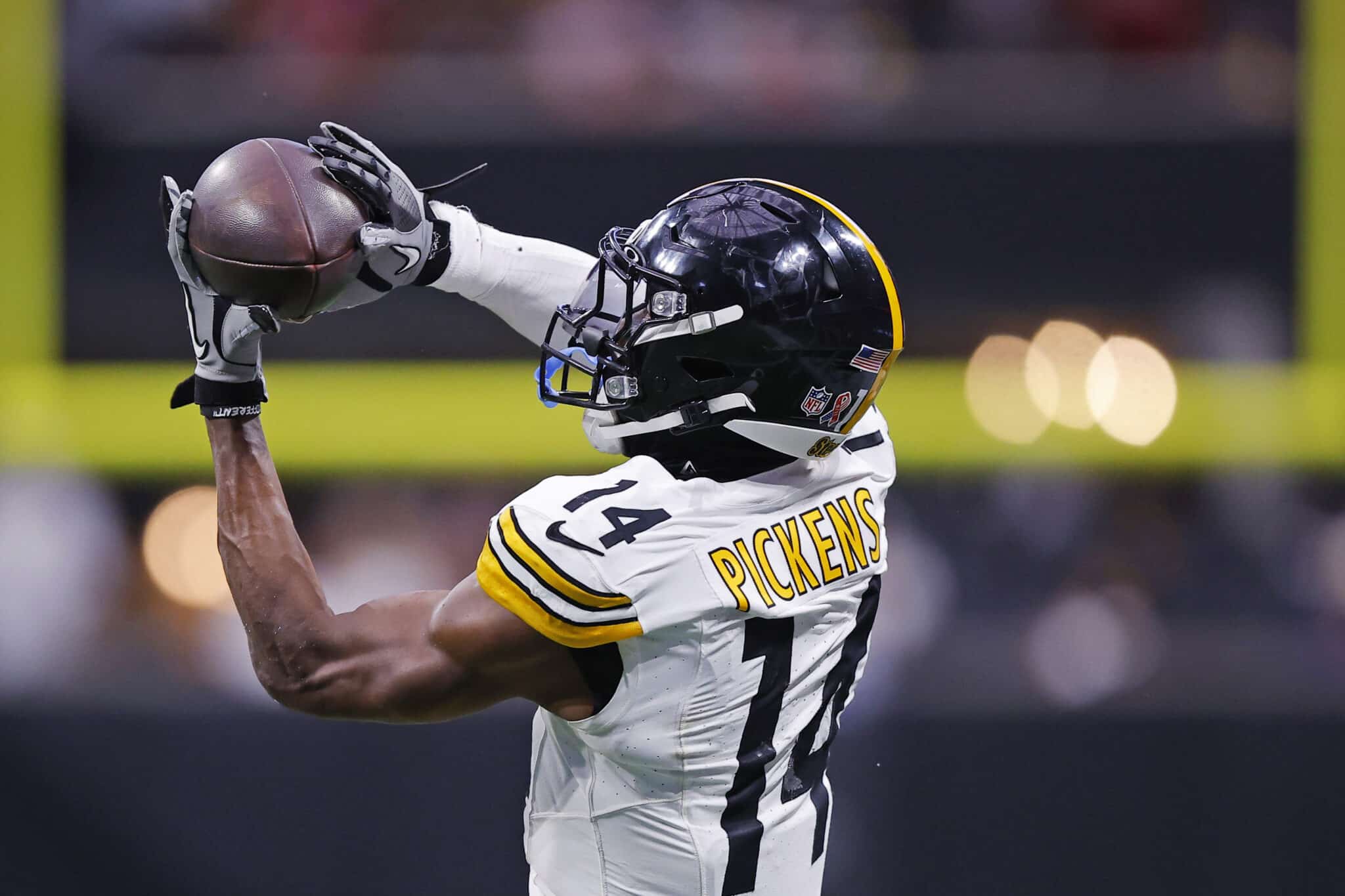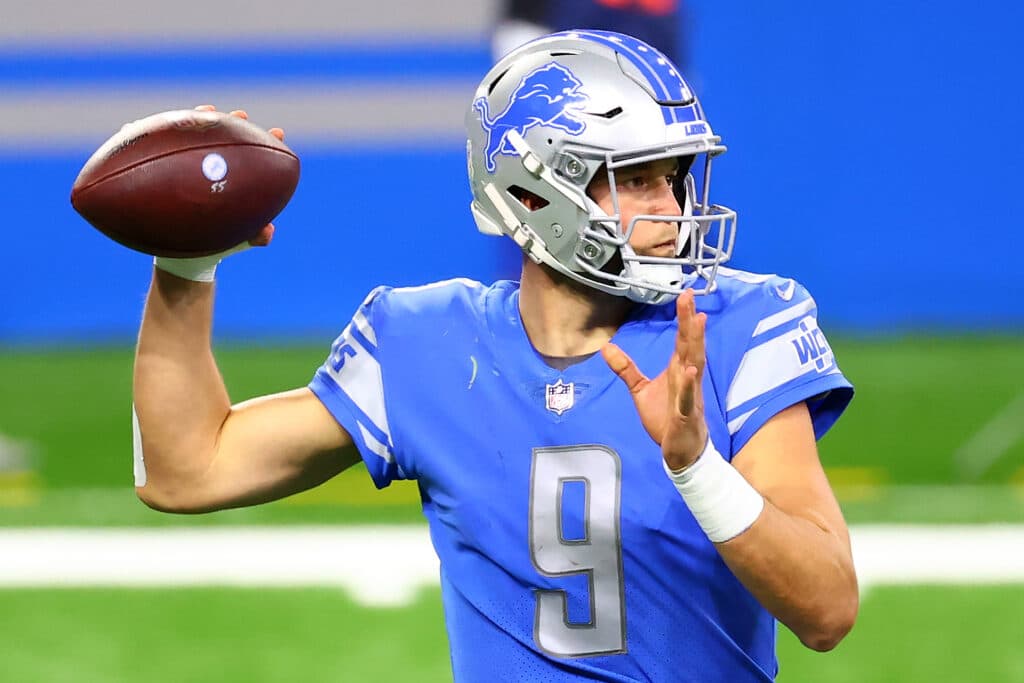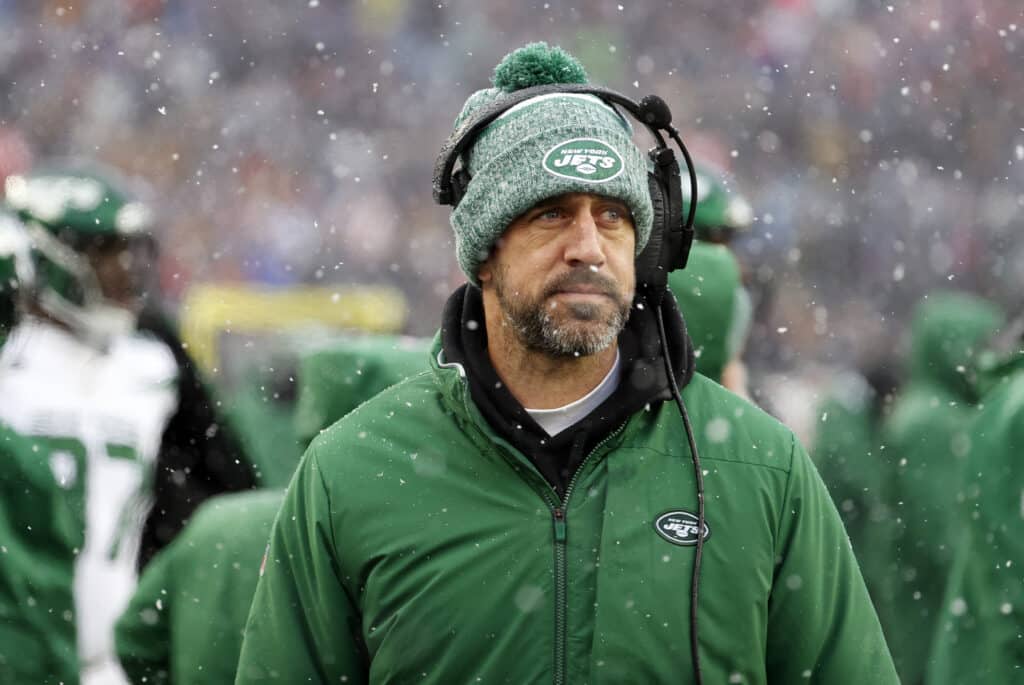> Aaron Rodgersbryce youngNFL
> Aaron Rodgersbryce youngNFL

The NFL is certainly open to different team-building strategies, but what the Pittsburgh Steelers are doing is almost unprecedented. After cleaning out their quarterback room for the second year in a row, the Steelers also just traded their leading receiver, George Pickens, to the Dallas Cowboys for modest compensation (nothing higher than a third-round pick).
Don’t forget the Steelers declined to do a second contract with running back Najee Harris, who left for the Chargers in free agency. With Russell Wilson on the Giants, Pickens in Dallas, and Harris with the Chargers, the 2025 Steelers are guaranteed to not have their leading passer, rusher, or receiver from last season.
As it turns out, this is quite rare in the NFL. According to research from the AP’s Josh Dubow, the 2025 Steelers will be the 14th team in the Super Bowl era to start a season without their leaders in passing, rushing, and receiving yards from the previous season.
Steelers will be 14th team in Super Bowl era to start a season w/out leaders in yds passing, rushing and receiving from pvs year per @sportradar. Also:
— Josh Dubow (@JoshDubowAP) May 7, 2025
2023 Panthers
2021 Lions
2019 Dolphins
2008 Bears
2006 Saints
2002 Ravens
1998 Ravens
1998 Chargers
1995 Cardinals
1995 Oilers…
Let’s look at what drove those teams to do this, what their plan was to replace them, how it fared, and we’ll close by looking at what the Steelers are facing as they try to break the record for most consecutive non-losing seasons in NFL history in 2025.
If you eyeballed the list above of the last 13 NFL teams to clean house on offense, you probably got the sense that this didn’t lead to much (if any) success right away. But maybe there was a long-term plan or vision.
Things got worse before they got better for the 49ers. They actually released Jim Plunkett, the former No. 1 overall pick, during the 1978 preseason, and yes, they brought in a 31-year-old O.J. Simpson to be their back that year. They also waived Gene Washington, a 4-time Pro Bowl wideout for the team.

It eventually worked out for the team. They were so bad in 1978 that they fired the coach during the season, hired Bill Walsh in 1979, and drafted Joe Montana. He eventually took over the job from Steve DeBerg, and Freddie Solomon, who the team picked up from Miami in 1978, was a solid receiver for Montana in the early days of the San Francisco dynasty that grew from this.
This one is fascinating, as the Lions obviously got a huge upgrade at running back when they drafted Barry Sanders in 1989 and watched him become arguably the best to ever play the position.
Rusty Hlger was a terrible quarterback who completed 41% of his passes in 1988, so he had to go. The Lions used a sixth-round pick on Rodney Peete in 1989, and he actually led the team with eight starts, but Bob Gagliano led in passing yards.
But nothing is more interesting than Richard Johnson, an NFL name that was unbeknownst to me before this. Never mind the snickering that his first and last name are both slang for a penis, Johnson was an undersized (5’9”) USFL receiver who played one game for the 1987 Redskins before winding up in Detroit in 1989 when he magically produced a 1,000-yard season at 28 years old.
He only played one more NFL season after that and retired for unknown reasons. But write that name down for one of the all-time one-year-wonder seasons.
While the Patriots were still a bad team in 1993, this was a plan that led to the playoffs in 1994 and a Super Bowl appearance in 1996. In 1993, the team hired Bill Parcells as the new head coach, used the No. 1 overall pick on Drew Bledsoe, gave their better back more carries, and after letting Irving Fryar go to Miami, they got a third-year breakout season from tight end Ben Coates, who was one of the best in his era.
This was a Houston team in flux after the end of an era with Warren Moon after the 1993 season. Head coach Jack Pardee was fired during the 1994 season and was replaced by Jeff Fisher, who held the job until 2010.
But Fisher’s team used the 1995 draft to add quarterback Steve McNair in the first round even though veteran Chris Chandler came over to give them better quarterback play than the Billy Joe’s could muster. Then with a pair of third-round picks, rookies Rodney Thomas and wideout Chris Sanders had very respectable seasons. Thomas was replaced by Eddie George in the 1996 draft, and once McNair took over as the full-time starter, the Titans were in the Super Bowl in 1999.
The main reason the Cardinals declined by 4 wins in 1995 was the defense fell from No. 4 to No. 30 (last) in points allowed. The offense actually stunk in both seasons for coach Buddy Ryan. Dave Krieg was another veteran journeyman they tried at quarterback, but he led the league in interceptions (21) and checked down so much to fullback Larry Centers that he had 101 catches that year.
One bright spot was the breakout year for Garrison Hearst, the back the Cardinals used the No. 3 pick on in 1993. After two worthless years, he rushed for 1,070 yards in 1995.
After missing out on Peyton Manning at the top of the 1998 draft, the Chargers thought they struck gold with quarterback Ryan Leaf. He turned out to be one of the biggest busts in NFL history and played terrible as a rookie when he saw the field.
The team tried to get younger at wide receiver by moving Tony Martin, but they brought back a fan favorite in running back Natrone Means after he spent the two previous seasons in Jacksonville.
But everything was a mess as long as Leaf was the quarterback.
Another plan that backfired. Vinny Testaverde was the first starting quarterback for the Ravens, and he went on to have a career year for the 1998 Jets. Meanwhile, Jim Harbaugh couldn’t recreate his 1995 magic on a new team in Baltimore.
Bam Morris was released after struggling with suspensions for his issues with drugs. But the Ravens fared better as Priest Holmes was the better back. They probably missed Derrick Alexander at wide receiver after he left in free agency.
Right back to the Ravens, who might actually be the closest example to the 2024-25 Steelers since they were a 10-win playoff team. Notice how all of these teams so far did not have a winning record.
But the Ravens are also arguably a misleading example here. Jamal Lewis would have been the leading rusher in 2001, but he tore his ACL in training camp and missed the entire season. Terry Allen was never going to be part of the plan for 2002 with Lewis coming back.
But the Ravens are also unique in that they won the Super Bowl in 2000 with Trent Dilfer at quarterback and decided to get rid of him, the only Super Bowl winner to do that. Their thought was any quarterback could win with their defense, but Elvis Grbac did not step in and have the impact some hoped for, so he only lasted one year before the Ravens tried to get things done with veteran Jeff Blake in 2002.
The Ravens also let Qadry Ismail sign with the Colts in 2002 while they tried to get something out of Travis Taylor, the No. 10 pick in the 2000 draft. But this team rarely gets it right at wide receiver.
No team on this list improved more than the 2006 Saints, but it’s also an outlier of an example. First, the 2005 Saints were terrible in large part due to Hurricane Katrina, which left them emotionally damaged and without a home stadium as the Superdome suffered damage in the storm. Star running back Deuce McAllister was also injured early or else he would have led in rushing yards and they wouldn’t make this list.
But they also improved because in 2006, they hired Sean Payton, signed quarterback Drew Brees, drafted Reggie Bush, and found a late-round gem in wide receiver Marques Colston.
After disappointing in 2007 following a Super Bowl loss, the Bears won a few more games in 2008. Kyle Orton was an improved quarterback from his 2005 rookie year, and he fared better than that duo of Rex Grossman and Brian Griese did in 2007.
Matt Forte was a better NFL back than Cedric Benson, who was a bit of a bust from the 2005 draft. The Bears let Bernard Berrian sign with the Vikings, which probably wasn’t a great move as they were trying to make Devin Hester their leading wideout in 2008.
I had to slap an asterisk on this one as it floored me that quarterback Ryan Fitzpatrick led the 2019 Dolphins with 243 rushing yards. Their top back was Mark Walton, who only had 201 yards as the team didn’t bring back veteran Frank Gore to pad his stats.
2019 was the start of the short-lived Brian Flores era in Miami. The team moved on from Ryan Tannehill and saw him immediately have a career year with the Titans. But Fitzpatrick helped DeVante Parker, in Year 5, to the best season of his career with 1,202 receiving yards.
This one can be explained by the Matthew Stafford trade to the Rams that sent Jared Goff to Detroit with rookie coach Dan Campbell. The Lions fired coach Matt Patricia in 2020 and were ready to move in a new direction while the Rams thought they were a better quarterback away from a Super Bowl, which was true.

But the Lions also went from a washed-up Adrian Peterson to a young D’Andre Swift, and Amon-Ra St. Brown was a hidden gem as a fourth-round rookie in 2021.
Swift never panned out, but Goff to St. Brown is the connection that’s powered Detroit to an elite offense and the No. 1 seed in 2024.
Another one that can be explained by a single trade. The Panthers had enough of trotting out Baker Mayfield and Sam Darnold in 2022, so they made an aggressive trade with Chicago to acquire the No. 1 pick to draft Bryce Young from Alabama. They had to give up No. 1 wideout D.J. Moore in the process, leading to Adam Thielen coming to Carolina in a big role.
The Panthers probably could have kept D’Onta Foreman for 2023, but they opted for Miles Sanders, a free-agent bust from the Eagles who was outplayed by Chuba Hubbard.
What did we learn from these 13 teams?
At quarterback, you better nail your draft pick (Bledsoe) or land a legitimate starter like Brees/Goff. Often times, going from one veteran to another doesn’t pan out like in the cases of Fitzpatrick, Grbac/Blake, Harbaugh, Krieg, etc.
While drafting Barry Sanders happens once in a generation (maybe a century), it is still much easier to find a better running back quickly as seen by Holmes, Hubbard, Swift, Forte, etc.
Receivers are trickier, but they’re also the players most dependent on their teammates. It’s hard to say if Colston or St. Brown would be this good right away if they didn’t start their careers with Brees and Goff throwing them the ball.
But of these 13 teams, 12 of them had a non-winning record to begin with, so they already weren’t playoff-caliber teams. Only the 2001 Ravens (10-6) had a winning record and were coming off a playoff season.
Only the 2006 Saints made the playoffs, and the 2008 Bears (9-7) were the only other team of the 13 to finish with a winning record the next year.
Also, nine of the 13 teams had a coaching change take place during the two-year period. Unless the Steelers somehow fire Mike Tomlin during the 2025 season, he’s as stable as any coach on this list, which adds another peculiar twist to this when you consider Tomlin reportedly was the driving force behind ridding the team of Pickens this week.

When you compare the 2024-25 Steelers to these other 13 teams, they really stand out:
For many of the 13 teams listed above, cutting ties with bad players or washed-up players made plenty of sense. For the Steelers, it’s a bit odd for a playoff team to get rid of a likely Hall of Fame quarterback, a young back with four straight 1,000-yard rushing seasons, and a young 1,000-yard receiver.
But again, you can make the argument that each move was justified:
At the end of the day, the Steelers’ plan seems to hinge on Aaron Rodgers signing in Pittsburgh for his age-42 season. At this point, he might be looking at a team that basically has Metcalf and little else to offer him and choose retirement instead after leading the Steelers on for months.
Of course, Rodgers could always pull another Brett Favre move by retiring and coming out of retirement should an injury to a starting quarterback on a contender catch his eye. But he could just never play again too.

But let’s say Rodgers returns for the 2025 season. At this point, the Steelers are basically his only option, and he is basically the only realistic QB1 option for the Steelers after exhausting free agency and the draft. They may have to settle for one another here.
You could do a lot worse than an offense with Rodgers, Metcalf, Warren, Kaleb Johnson, tight end Pat Friermuth, and some recent high picks on the offensive line.
There are concepts of a plan here. But if Rodgers doesn’t come through and sign, the Steelers are looking at Mason Rudolph forcing jump balls to Metcalf and handing off to a rookie and a back in Warren who’s never had more than 15 carries in any game in his career.
That sure sounds like the plan to make sure this team has its first losing season since 2003. But would that even be that bad of an outcome? That season led to drafting Ben Roethlisberger in 2004. Maybe a truly bad season for the Steelers could lead to drafting Texas quarterback Arch Manning in 2026.
One could dream.
Related Articles: